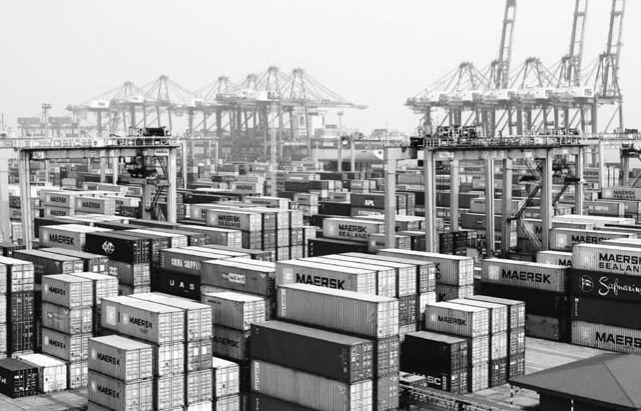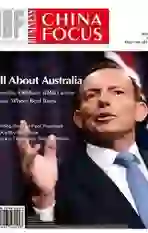China’s Augmented Effect on Emerging Markets
2014-09-22
Six years after the outbreak of international financial crisis, the world economy is still on a thorny path of recovery. In the next few years, the developed economies might be braced with a better time while emerging markets are more likely to be trapped in the marshland.
“In the following few years, the emerging markets need to keep their growth in the international environment with the condition less favorable than the ones before the crisis,” IMF said in its World Economic Outlook published in late March.
In the report, IMF stressed that the international conditions for emerging markets in fundraising and trade soured greatly compared with six years ago. Of them, the slow GDP growth of China brought by its aspiration to a sustainable development pattern could particularly apply negative effect – though temporarily – on the other emerging markets.
As the global economy turns into the normality, IMF forecast that the effective interest country of each country will get rid of the trend of turning negative that was started in the financial crisis. They will keep rising in the mediumterm, but the rise might not be apparent in the current period. The outlook of continuously low effective interest rate will bring about the new challenges to policies.
The finite rise of interest rate
As of the 1980s, the effective interest rate of each country had an apparent drop and is now in the slightly negative territory. As the global economic situation becomes more regular, IMF daresay that the trend will be stopped in the coming future and embrace a small increase.
“There are no obvious reasons to support the fast rebound of effective interest rate in the long term and it is not likely to return to the 2% average level in the first ten years of this century,”IMF said in its report. This is because the three main factors that caused the decrease in effective interest rate are unlikely to be reversed in the medium-term. The three factors are none other than deposits, assets portfolio and investment change.
According to IMF, from 2000 to 2007, the dramatic increase in the savings ratio in emerging economies might be slightly reversed in the future, meaning that the effective interest rate is only likely to have a small increase. In the 2000s, the drop in interest could be attributed to the increasing demand for safer products. The demand still lingers there, because of the augmented risk of stocks compared with bonds and the accumulative foreign exchange reserves of emerging economies.endprint
In addition, the downward trend of the investment from developed economies, which was started after the financial crisis, might be continued in the future.
Whats noteworthy is that the effective interest rate which is kept at a low level can help borrowers lower the liability rate, but it will bring about the new challenges to the policy.
The report stated that the anticipated low effective interest rate, under the current frame of monetary policies, means that the lack of lower limit for the interest rate will restrain the monetary policies if the assumption of the risk of extremely slow economic growth of developed economies turns into the truth.
China as an important“international condition”
Though the global interest rate is likely to meet a slight increase and the development of emerging economies will benefit from the increasing fast recovery of developed economies, these favorable conditions are almost nothing compared with the conditions the emerging economies enjoyed before the financial crisis.
When the international conditions soured and never returned to the level six years ago, the internal problems in some countries also wear down their economic growth potential.
In its report, IMF stated that the changes to its economic conditions are 50% caused by the international conditions, mainly referring to the foreign demand, fundraising and trading condi- tions. For example, if the U.S. GDP grew 1 percent, the emerging markets will have a 0.3% increase, which might happen two years later than the U.S. economic growth.
The U.S. is an important “international condition” for emerging markets. China, however, is also increasing its influence over the other emerging econo-
mies in the world. According to IMF, 1% GDP growth of China means the 0.1-percent rise to the GDP of other economies. Along with the increasing trade ties between China and other emerging economies, this positive relation will be maintained and augmented.
From these, we can see the economic development of emerging economies highly depends on the international factors, but this is not a common case for emerging. These countries that have a grand economic size or are not very open to the outside – China and India, for example – are not to be so easily influenced by the international factors.
Different from the “everything is OK” international conditions before the financial crisis, not all the international factors support the growth of emerging countries today. The anticipated slowdown of Chinese economy, as well as the tightened conditions for international fundraising, will weigh on the emerging markets.
Actually, it is not a secret that the current Chinese economy is not flawless and problem-free. An overall analysis of the economic data concerning consumption, investment, exportation and social fundraising revealed that the economic situation in China is generally in a weak state as of the beginning of this year. The 7.4% GDP growth rate of China in Q1, 2014 further proved this point.
For this, IMF said in its report that China was struggling to move to a more acceptable and sustainable development pattern at the cost of slowed economic growth. This would have temporary negative impact over the other emerging economies.endprint
